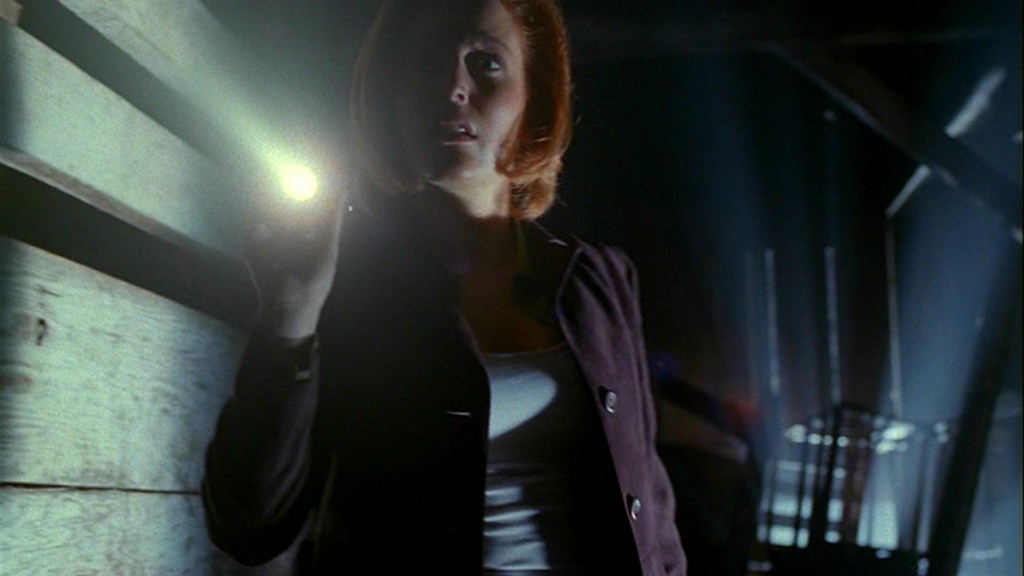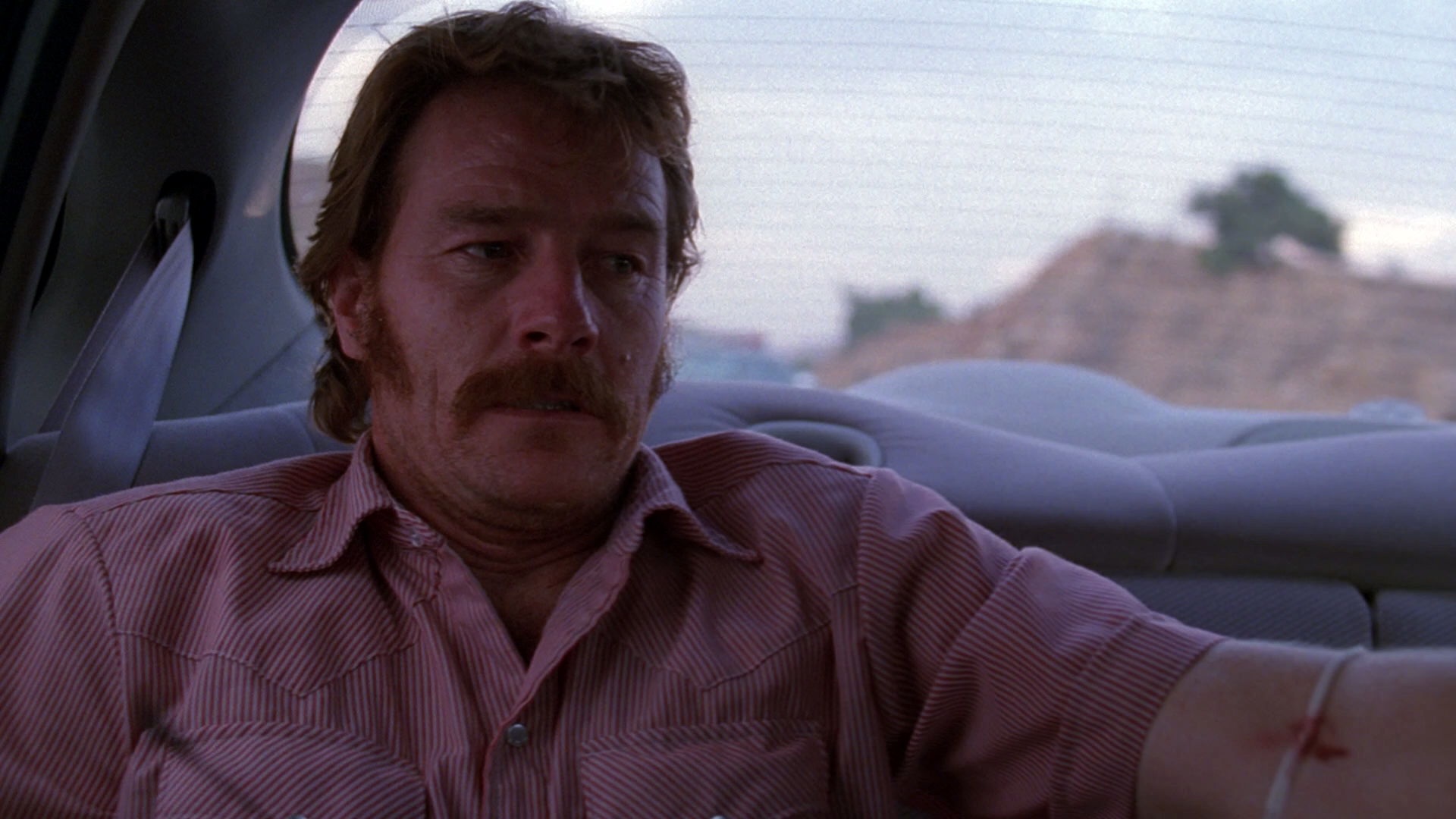As many of you Breaking Bad and Better Call Saul fans know, before Vince Gilligan became a demi-God of modern television in the late aughts, he was learning the ropes under the hands of Chris Carter, the father of The X-Files. Gilligan wrote or co-wrote 30 episodes of the classic sci-fi series, which undoubtedly played a key part in his success many years later. Carter gave Gilligan enough creative freedom that allowed him to play out the full scope of his ideas ranging from suspenseful to touchingly dramatic to campy and downright hilarious. As a result, he’s written some of the most gripping and beloved episodes in the show’s history.
Gilligan had great talent to begin with, but it was the versatility of The X-Files that permitted his creativity to flourish in numerous ways. Now, we’re here to highlight some of the finest work he’s done for the series through nine seasons.
Pusher
Season 3 Episode 17 – Feb. 23, 1996
Gilligan’s second entry as a writer into the series is peak X-Files. Tightly written, filled with suffocating tension and pounding suspense, “Pusher” is a simple yet effective story about a serial killer called Robert P. Modell (Robert Wisden), who mastered psychokinesis. Although there are baffling scenes such as a police officer lighting himself on fire against his will, the episode’s greatness lies in its chilling atmosphere and the psychological pressure Gilligan adds from scene to scene, raising the stakes through the roof. In the finale, everything comes to a head when Mulder finds himself in a situation out of his control, endangering not only his own but Scully’s life, too. No doubt, “Pusher” is an absolute banger.
Unruhe
Season 4 Episode 4 – Oct. 27, 1996
“Unruhe” is a splendid example of Gilligan’s sublime ability to create compelling, mentally deranged characters and rising tension through words. As he introduces the episode’s central character, Gerry Schnauz (Pruitt Taylor Vince at his most terrifying) — a paranoid schizophrenic with the skill of psychic photography who abducts and kills women — there’s an eerie pressure slowly creeping under our skin. It’s an elaborate narrative, full of intense twists, in which Gilligan toys with our expectations to completely nuke them in an atrocious finale. It’s a perfect early demonstration of suspense and intrigue in action, which he later refined and mastered entirely in Breaking Bad.
Paper Hearts
Season 4 Episode 10 – Dec. 15, 1996
“Paper Hearts” was an episode that let Gilligan showcase his dramatic writing chops. Although it features a sinister serial killer (played disturbingly well by a fantastic Tom Noonan), its strength lies in unpacking and exploring Mulder’s childhood trauma and unprocessed grief of his missing sister. As Noonan’s murderer hints that he might’ve had something to do with Samantha’s abduction and disappearance, Mulder clings to it as a gleam of hope that might bring him closure. It’s an excellent, if devastating, character study that deepens our empathy for Mulder’s crippling loss, which he still grapples with constantly and seems unable to let go.
Unusual Suspects
Season 5 Episode 3 – Nov. 15, 1997
“Unusual Suspects” is the origin story of The Lone Gunmen. Taking place in 1989, before the X-files unit even existed, Gilligan tells us how the trio of Melvin Frohike (Tom Braidwood), John F. Byers (Bruce Harwood), and Richard Langly (Dean Haglund) first met at a computer convention and became the government conspiracy group as we know them. They’re the protagonists — there’s no Scully, and Mulder is basically a footnote — who all try to protect a woman that’s on the run from the government.
It’s obvious how much fun Gilligan had writing this episode (and later an entire spinoff for these characters), tastefully blending nostalgia, wit, and the trademark theme of government conspiracies. Keeping things light for the most part, “Unusual Suspects” is a delicacy that showcases how he acquired a balance of comedy and drama, shaping it to his own style over the years.
Bad Blood
Season 5 Episode 12 – Feb. 22, 1998
Arguably the funniest episode in the series. Told through a silly vampire narrative, “Bad Blood” is all about the “work marriage” between Scully and Mulder. After years of working together, we finally learn how they see each other. Recalling the events of a “vampire case,” the story is told from their vastly differing perspective, which brings about a campy and humorous tone that’s a rarity in The X-Files.
Gilligan’s dedication to the characters shines bright as he amplifies and ridicules their traits to great effect. Just because we don’t normally see this, Mulder and Scully often get on each other’s nerves with their typical behavior and choice of words. That’s exactly what Gilligan aims for. The actual case — involving fake fangs, gleaming green eyes, and a delightful guest performance by Luke Wilson — barely matters as we see the two bicker like an old married couple about trivial things.
Drive
Season 6 Episode 2 – Nov. 15, 1998
If you’re a devoted fan of Gilligan’s creations, there are plenty of “aha” moments in his X-Files episodes that help you backtrack how some essential elements of Breaking Bad and Better Call Saul came together. The most obvious is Season 6’s “Drive,” which was the first time Gilligan and Bryan Cranston worked together. It’s a fast-paced and breathless episode that finds Mulder (David Duchovny) taken hostage by an unhinged lunatic named Crump (Cranston), who’s driving west as fast as he can under an excruciating pain that’s caused by some secret government experiment.
Gilligan gives very few lines to Cranston, instead, he lets his magnetic presence take over. The character’s story eventually ties in with the show’s trademark government conspiracy theory flawlessly. No doubt, their first collaboration was superb and meant for more than a single episode of television.
Dreamland
Season 6 Episodes 4 and 5 – Nov. 29 and Dec 6, 1998
A quintessential two-parter in the series’s mythology, “Dreamland” leans in on the UFO lore heavily by sending Scully and Mulder to Area 51 on an anonymous tip. Here, Gilligan mixes his comedic touch with the classic theme of government conspiracies and extraterrestrial theories while Mulder and a Men in Black agent switch bodies during a spooky event involving an unidentified flying object.
Although Duchovny and Michael McKean (Better Call Saul fans rejoice) steal most of the show by putting their comedic acting chops to great use, the story’s extraterrestrial aspect and government machinations are what elevate these episodes into the heights of The X-Files canon.
Tithonus
Season 6 Episode 10 – Jan. 24, 1999
In “Tithonus,” the story revolves around a strange photographer named Fellig (Geoffrey Lewis), who’s drawn to people who are about to die. And right before their death occurs, he’s locked in and ready to take a picture of their freshly-deceased body. Gilligan’s magic in this episode is that he doesn’t play around with the plot’s reveal. Scully (Gillian Anderson) learns early that Fellig isn’t lying, in fact, he tells her everything she wants to know (including that he’s been around for about 160 years and doesn’t age or is able to die as far as he knows).
“Tithonus” is mesmerizing because Gilligan is interested in the philosophical and existential aspects of the story, providing food for thought instead of cheap thrills and giving us an obscure and fascinating character study. The nail-biting ending also brings around a masterfully timed twist about Scully’s fate, which will poignantly affect her arc in the rest of the season.

Roadrunners
Season 8 Episode 4 – Nov. 26, 2000
Although the latter seasons without Mulder could never completely fill his absence, some episodes came close. In “Roadrunners,” Gilligan almost entirely relies on Gillian Anderson’s enthralling dominance to pull off a classic monster-of-the-week entry with minimal support from Robert Patrick’s Doggett. As Scully is trapped in a bleak small town in the middle of nowhere (after investigating a bizarre murder), she has to face a deranged religious cult made of locals who worship a gooey parasite that “travels” from host to host, eventually finding its way into her spine
“Roadrunners” is deliciously gory and unsettling with a couple of well-placed turns, evoking some of the best horror episodes in the show’s history.
All 11 seasons of The X-Files are available to stream on Hulu in the U.S. and Disney+ in the U.K. Better Call Saul’s final season will arrive to Netflix on April 18.
